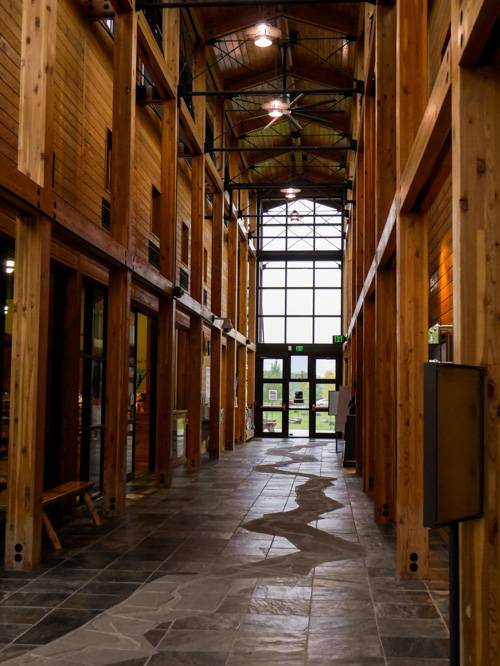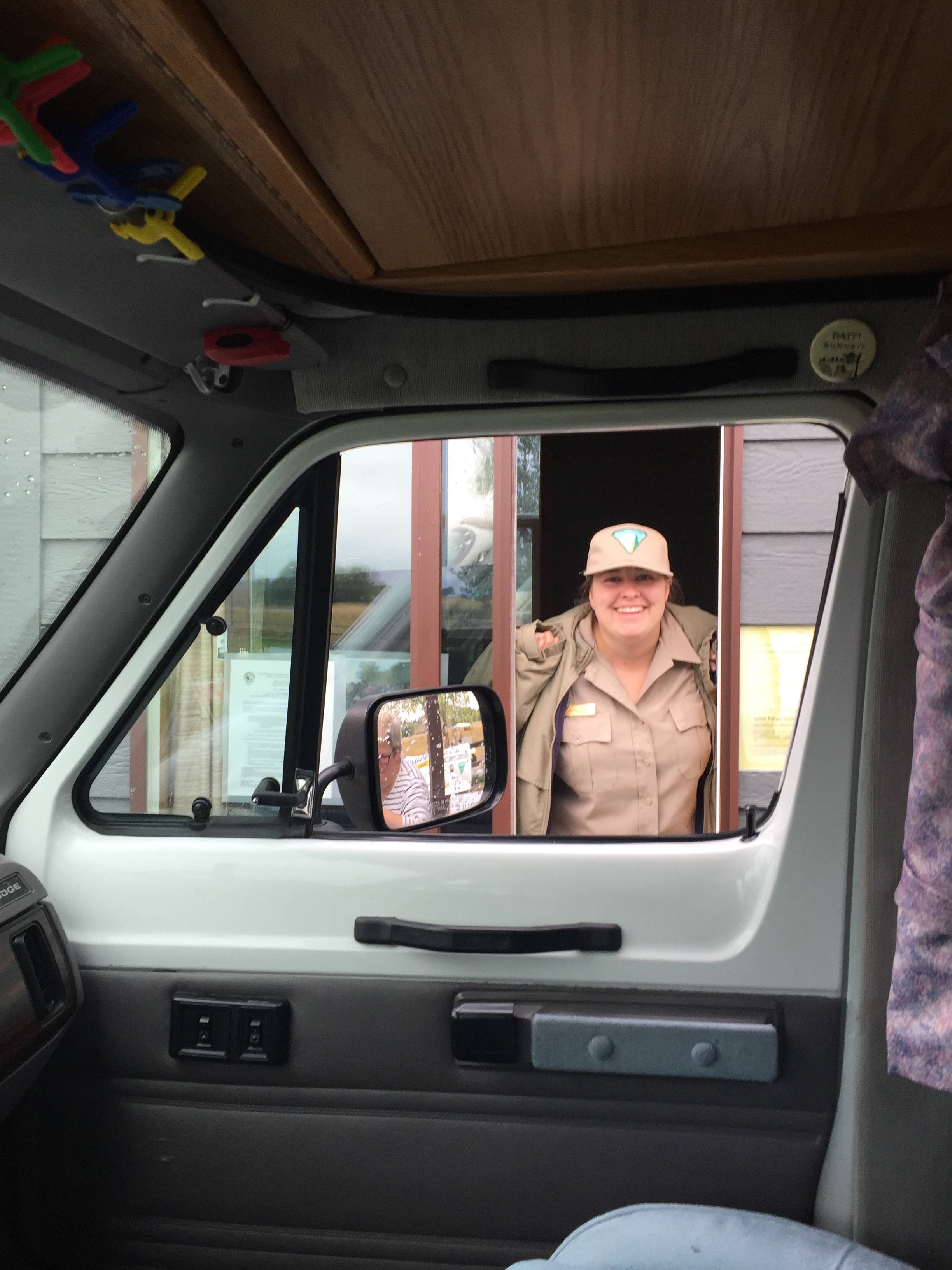By Maggie Burkett
In eastern Montana, the Yellowstone River is lined with rimrock cliffs that extend more than a hundred feet in the air. They posed a substantial obstacle to settlers moving west, as well as migrating herds of bison, deer, and elk and the wolves that followed them. At one point, about thirty miles east of Billings, a pillar of rock rises from the prairie, seemingly chunked out of the wall and moved across the water. From many angles it’s easy to miss this huge feature, but the resulting gap provides a way past the rimrock, and the pillar has been a guidepost to travelers for centuries.
This rock monolith is now a national monument, and our daughter Maggie just spent a season working there as a park ranger. We’ll let her tell you a bit about it.

In the summer of 1806, William Clark was traveling down the Yellowstone River with part of the Corps of Discovery, including their guide Sacajawea and her infant son Jean-Baptiste, affectionately nicknamed Pomp by Clark. They had separated from the rest of the group at Travelers Rest, four hundred miles to the west. Lewis took another group north to explore the farther reaches of the Marias River, planning to meet up with Clark a month later at the confluence of the Missouri and the Yellowstone.

Clark and his party intended to travel on the river, but had not been able to find trees large enough to make suitable canoes. When one of the party was injured, they were forced to make do with the best trees they could find in the area, and spent several days hollowing cottonwood logs. The river journey was uneventful until they reached the pillar, which Clark named in honor of Jean-Baptiste. Pompy’s Tower was later renamed Pompey’s Pillar by the editor of the Corp’s journals. Look back at the Roadtreking blog from October of 2015 and you can find Mike’s enthusiastic report of visiting the pillar. The visitor center is closed for the winter, but you can still walk in and visit from dawn to dusk, and all the facilities will be open again in May of next year.
Summer is a good time to visit, because you can experience Clark’s Days. Free admission and camping, Native American dancing, cowboy poetry, live music, campfires by the river, bird walks, stargazing, traditional foods, and historic reenactments. It’s a big deal! Check the park website foe dates. Last year it was at the end of July. If you come, try not to miss the cabin. It’s the old visitor center, at the foot of the Pillar, and has an extensive display of native Montana wildlife. You can touch the pelts of bison, fox, wolf, and grizzly bear. Summer is also the time to see yellow-bellied marmots, who make their home in the cracks and crevices of the Pillar.
We had a great visit, and went on west to see several other sites from this amazing chapter of our national history. Among them was a visit to the National Museum of the Plains Indian in Browning, outside the east entrance of Glacier park. This museum sits on a dusty woebegone plot of ground across from a diner and the grandly-named Glacier Peaks casino. It’s a completely nondescript 1940s brick building, and it looked uninhabited when we stopped in the parking lot. Don’t be fooled. It would be a shame to miss the rich and varied displays of native textiles, pipes, and other crafts found inside.
We also took time to watch a thirty-minute film called Two Worlds at Two Medicine, a Blackfeet Indian documentary of the only fatal encounter in all of Lewis & Clark’s travels. It was instructive to see the event, in which two young Blackfeet braves were killed and Lewis nearly lost his life, from the perspective of the indigenous people. We had lunch at the casino, too. The hamburger and rice soup, served in styrofoam bowls was nothing to write home about, but the hot fry bread that came with it was outstanding.
You can find Lewis & Clark sites across the west, and every one of them will be worth the time you take to stop and explore. Poke your head into the Lewis & Clark Caverns near Three Forks or look at Oscar Howe’s murals in Mobridge, South Dakota. Come see us at Pompey’s Pillar and I’ll tell you about Sergeant Pryor and the bull boats he made from bison hides. And while you’re out there, look for my parents, Patti & Tom Burkett, wandering around off the beaten path.
Resources:
https://rvlifestyle.com/pompeys-pillar-a-must-stop-in-montana/
https://www.nps.gov/nr/travel/lewisandclark/pom.htm
https://www.doi.gov/iacb/museum-plains-indian
Comments are closed.




